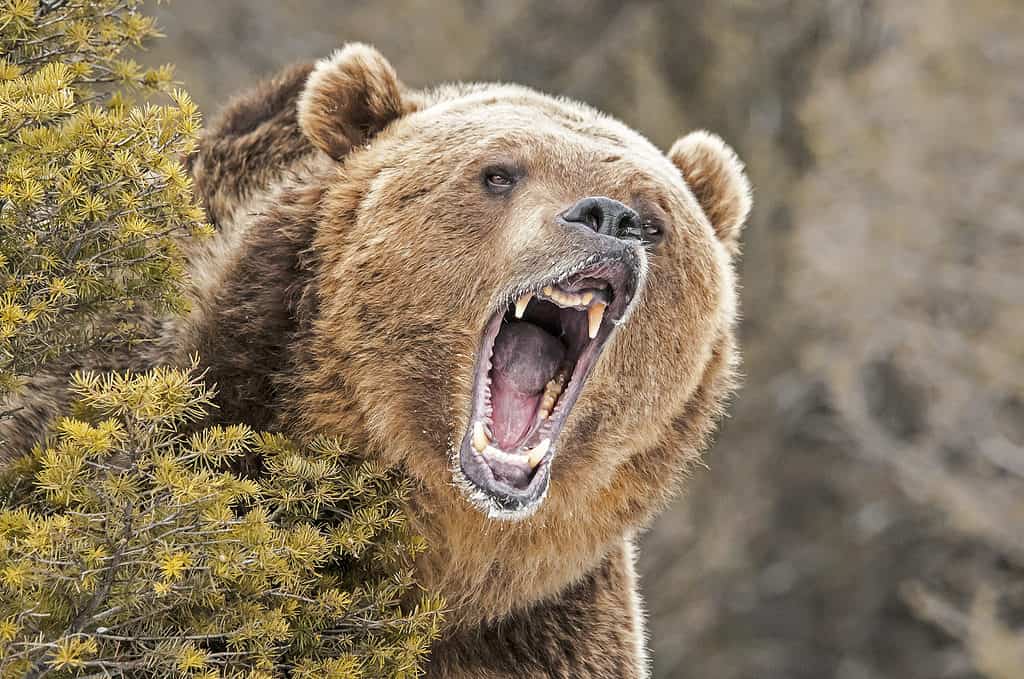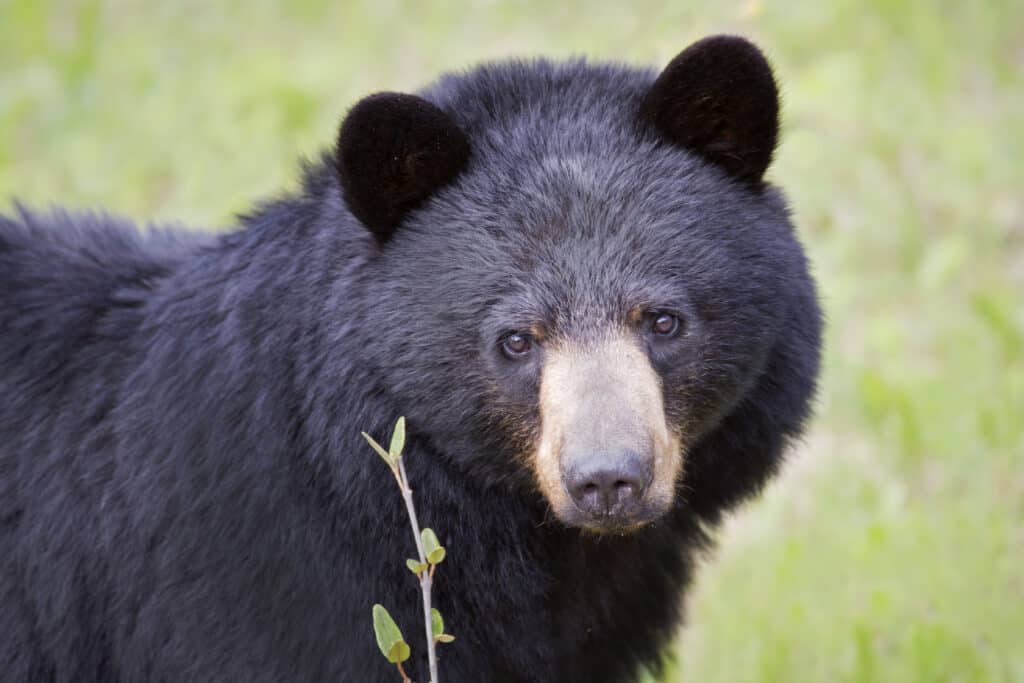Unlike most states, Wisconsin does keep records on black bear size. Therefore, we know exactly how large the largest black bear ever caught in this state was.
In November 1963, a 16-year-old girl named Linda Lunsman shot a 635-pound bear during deer season. The bear was shot in the head, so we do not have a skull-size measurement for the bear. This is how most of the bears are measured and kept track of.
However, the bear’s weight indicates that he is much larger than average. The bear stood over 7 feet tall.
There has not been a larger bear shot in the state since. This bear held the world record for a long time. It still holds the record in the state – and likely will for a long time to come.
Other Close Records

Grizzly bears are omnivores – plants make up a large part of their diet.
©Scott E Read/Shutterstock.com
Of course, some other bears have come close to beating this record. For instance, in 2021, a bear weighing around 720 pounds was shot by an 11-year-old girl on the first day of hunting season. Surprisingly, this was the first bear the girl ever saw – let alone shot.
While this bear’s weight was larger than the previous record, the other measurements were lower. Because a bear’s weight varies so much throughout the year (due to their feast-and-famine eating style), other measurements are used to determine records. In other words, this bear was fat but lower in stature than the previous record holder.
Therefore, while this bear did come close to beating the record, it didn’t quite make it.
There was a 780-pound bear also shot in Wisconsin in 2014. However, while this bear did weigh a lot, its measurements didn’t allow it to surpass the record. Again, measurements and weight aren’t directly correlated. This bear seemed to have access to unlimited food, which is why it had so much built-up fat. However, its skull measurement didn’t meet the requirements to break the record.
What Affects Black Bear Size?

Black bears are generally only dangerous when provoked or hungry.
©Wild Art/Shutterstock.com
When measuring bears for records, the skull and skeleton sizes are usually used to determine the size of the bear. A bear’s weight can vary a lot from season to season. Bears eat a lot in the summer and fall months to prepare for hibernation. Therefore, they tend to bulk up during this period.
However, bears can lose hundreds of pounds over the winter while hibernating. Therefore, the weight alone isn’t a good marker for size. It simply varies so much throughout the year.
Furthermore, bears with access to lots of food will gain weight quickly. Sometimes, they can become hundreds of pounds overweight. However, these bears are just that – overweight. Their larger body mass doesn’t affect their skull size, which is the most common indicator for records.
Genetics is largely the largest factor affecting a bear’s skull size. If a bear’s parents were large, then the bear would be larger, too. Males are up to 60% larger than females, meaning most record-holding bears are male. It’s very rare for a female to reach the same size as a male.
Nutrition can also play some role, particularly prenatal nutrition. If a mother cannot provide developing fetuses and cubs with the proper nutrition, they may become stunted. Therefore, not all bears will grow to their genes’ full size. What they eat while developing will affect how big they become.
However, once full-grown, a bear’s skull and skeleton sizes are fixed. Therefore, the bear cannot grow any larger once the bear stops growing. Of course, the bear’s weight will still increase and decrease throughout the year, and the bear may become overweight if provided with too much food (usually due to human activities). However, these factors won’t affect the bear’s skeletal size.
Bear Genetics

Grizzly bears are a threatened species in the United States.
©Jack Nevitt/Shutterstock.com
Because genetics plays such a large role in size, different states tend to have bigger bears than others. For instance, Wisconsin tends to have larger bears than some other states. Many bears within the same area will share genetics, making them similar in size.
Of course, access to food is important. If the limiting factor for black bears is lower in an area, they may be smaller despite their genetics. Stunted bears are relatively common in the wild, especially if the mother eats nutritionally poor food (like trash).
A proper hiding spot is a huge limiting factor for black bears. Cover is necessary to ensure the bear’s security while feeding, sleeping, and caring for cubs. Black bears are less common and often smaller in areas with little cover.
The photo featured at the top of this post is © Falade Adewale/Shutterstock.com
Thank you for reading! Have some feedback for us? Contact the AZ Animals editorial team.






